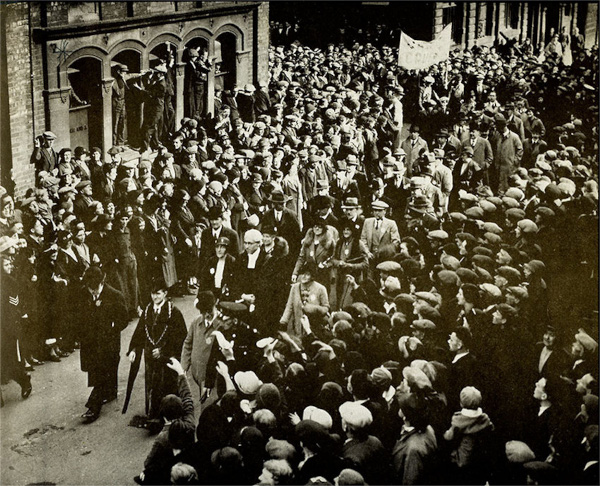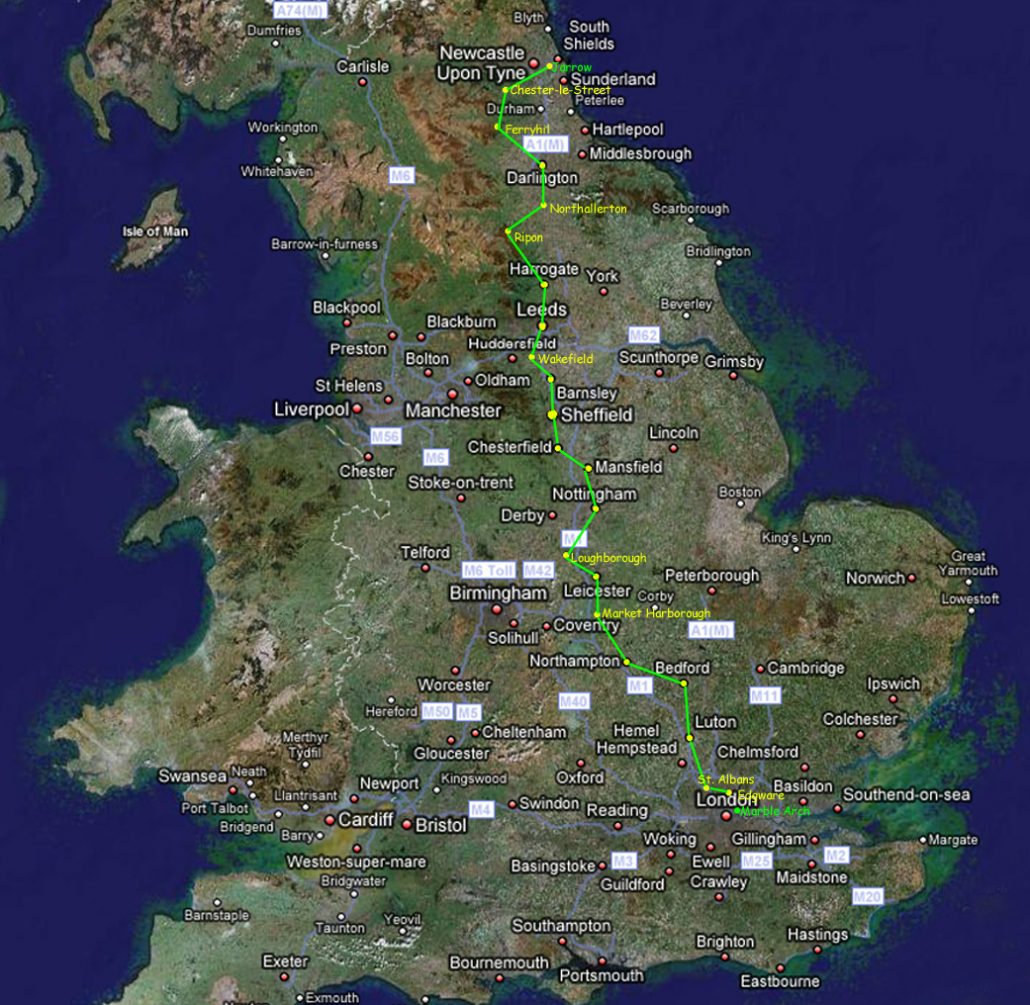Published by Shahdaroba Wednesday 15th February 2012 (with updates 2021/23)
This moment in history refers to the gathering and subsequent march of the Jarrow Crusade, which took place in 1936 during the Great Depression. The town of Jarrow, located in the North East of England, was severely affected by high unemployment and poverty, with a significant portion of its workforce being out of work.

Some wore suits while others were dressed in jackets, waistcoats, trousers, heavy boots, and some with the legendary flat caps allied with the North East of England. Others amongst them were dressed in dark-colored jackets with lighter-colored trousers and heavy boots.
The March To London
On a bright autumn day, a band of around 200 men, accompanied by a dog early into the march, gathered after a service at Christ Church. These men were desperate to draw attention to their plight as the town of Jarrow, located in the North East of England, was severely affected by high unemployment and poverty. The global Great Depression in the 1930s had brought mean, lean years, particularly to North East England, leaving many families with little food and very few clothes, often just what they wore.
Situated on the North East coast between Hebburn and South Shields, Jarrow was experiencing high unemployment and poverty. This led its people to take action. Following a service at Christ Church, a group of 200 men, resolute in their desire to be heard, set out on a 282-mile journey to London to personally deliver their petition to Parliament.
Today this journey would take us about 4-5 hours by car, yet here were individuals so sick and tired of no work they were willing to walk the distance to have their voices heard. A distance of almost 300 miles (482.8km). Their march would take them through many towns, eventually arriving at Marble Arch on 31 October, almost a month after leaving their hometown of Jarrow.
The devastating loss of Palmer Shipbuilders brought high Unemployment and poverty to the town and became the norm, with Jarrow being one of the hardest-hit towns. Over 74% of the workforce was unemployed, and even the latest figures, issued by the Ministry of Labour in March, showed a staggering 51% unemployment rate. Many other towns across the country were also suffering from similar challenges.

Jarrow Marcher
Sadly after a short illness, Con Shiels who was just 20 when he took part in the march from the northeast to the capital in 1936 died at 96. He was the last living survivor of the march.
Their struggles were not imagined but a harsh reality. Just a few years earlier, in 1933, the author J.B. Priestley visited Jarrow and commented on the bleakness he observed:
“I have seen nothing like it since the war. There is no escape anywhere from its prevailing misery. One little street may be rather more wretched than another but to the outsider, they all look alike. One out of every two shops appears to be permanently closed. Where ever we went men were hanging about, not scores of them, but hundreds and thousands of them. The whole town looked as if it had entered a penniless bleak Sabbath”.
J.B. Priestly. English Journey, London 1934.
Palmer Employment
Charles Mark and George Palmer Established their shipbuilding firm on the south bank of the River Tyne. Jarrow quickly became a thriving hub of employment, attracting workers from as far as Ireland in search of job opportunities. Recognizing the importance of their workforce, Charles Palmer decided to construct a hospital for them in December 1870. With each success they achieved, prosperity flowed into the town, leading to a tenfold increase in population by the end of the century. The Palmer brothers expanded their business to include iron and steel manufacturing, gaining worldwide recognition. From 1851 to 1933, they built an impressive fleet of 900 vessels, meticulously documenting each transaction.
However, the tide of fortune began to turn around 1920. Slowly but steadily, the situation worsened. In 1931, Jarrow suffered the loss of its steelworks, followed by the collapse of the shipbuilding industry a few years later. These devastating blows left the workforce in despair and the town virtually destitute.
Demise Of An Industry
The loss of the steel industry marked the first nail in Jarrow’s coffin, but the subsequent demise of shipbuilding brought the workforce to its knees. Poverty and deprivation engulfed the once-proud workers, who were now compelled to beg or rely on credit.
Credit that no one knew when or how it could be repaid. This desperate situation paved the way for the Jarrow March, also known as the Jarrow Crusade. The people had endured enough—their town was dying and they desperately needed employment.
Reflecting on these historical events, one cannot help but wonder if poverty and deprivation persist in today’s society. In my opinion, they do, and if left unaddressed, we risk regressing to a time reminiscent of workhouses, where unquestioning subservience was the norm. (Reviewed where necessary 2023 Shad)
Follow the Marchers: Jarrow To Ferryhill.